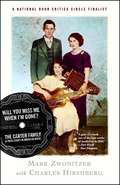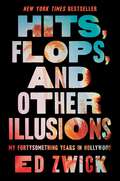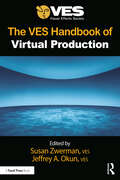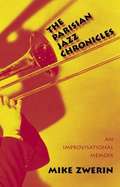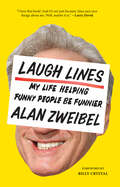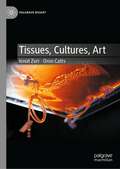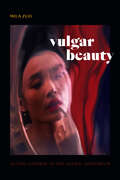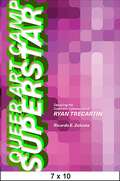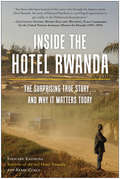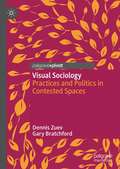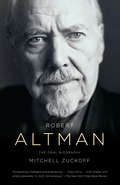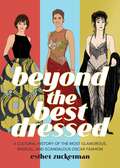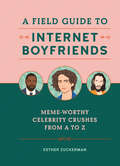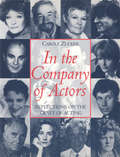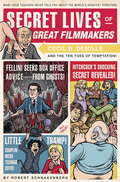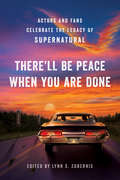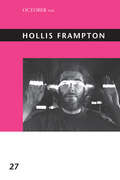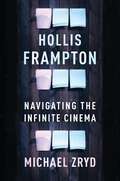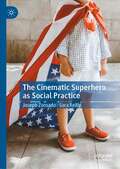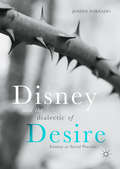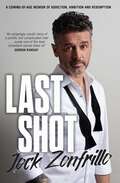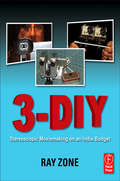- Table View
- List View
Will You Miss Me When I'm Gone?
by Mark Zwonitzer Charles HirshbergWill You Miss Me When I'm Gone? is the first major biography of the Carter Family, the musical pioneers who almost single-handedly established the sounds and traditions that grew into modern folk, country, and bluegrass music -- a style celebrated in O Brother, Where Art Thou?A.P. Carter was a restless man, seemingly in a constant state of motion. On one of his travels across the sparsely settled mountains and valleys that surrounded his home in southern Virginia, he met and married a young girl named Sara Dougherty. Orphaned as a child, Sara was remote by nature but seemed to find release in singing the typically melancholy ballads that were a part of her home tradition.For fun, A.P., Sara, and her cousin Maybelle (who married A.P.'s brother "Eck" Carter) would play and sing the hymns and ballads known in their Poor Valley community, occasionally adding songs A.P. had collected during his travels. Then, in 1927, they traveled to Bristol, Tennessee, to audition for a New York record executive who was hunting "hillbilly" talent and offering an amazing fifty dollars per song for any he recorded. These Bristol recording sessions would become generally accepted as the "Big Bang" of country music, producing two of its first stars: Jimmie Rodgers and the Carter Family.By the early 1930s, the Carter Family was the most bankable country music group in America, with total sales of more than a million records. By the late '30s, they were appearing regularly on high-power radio station XERA, which broadcast from coast to coast. A whole generation of country people could gather around the radio and hear the sound of music that came straight from their world. Johnny Cash in Arkansas, Waylon Jennings in Texas, Chet Atkins in Georgia, and Tom T. Hall in Kentucky all listened to the Carter Family. It was their formal schooling, Country Music 101.Inside the Carter Family, however, things were hardly perfect. Though nobody outside the family knew it, Sara had left her difficult and quixotic husband in 1933. In 1936 she won a divorce. Even throughout the long and painful breakup, the Carters kept performing together, singing an ever-widening range of new songs they wrote or old songs they remade: songs of love, of betrayal, and of the death of fondest hopes. And they kept at it even after Sara married A.P.'s cousin Coy Bays in 1939. After fulfilling a final radio contract in 1943, Sara and Coy moved to California to settle near his family. The original Carter Family never performed or recorded together again.With Sara gone, A.P. retreated home, opened a general store, and lived out the next two decades in obscurity, the odd man out in a new and reconfigured Carter musical clan. Meanwhile, Maybelle and her daughters (Helen, June, and Anita) went out and got themselves new radio contracts, working in Richmond, Virginia; Knoxville, Tennessee; and Springfield, Missouri, before ascending to country music's ultimate stage, Nashville's Grand Ole Opry. Nearly fifty years in the business won Maybelle the title "Mother of Country Music" and the adoration of generations of guitar players and just plain listeners.The story of the Carter Family is a bittersweet saga of love and fulfillment, sadness and loss. Will You Miss Me When I'm Gone? is more than just a biography of a family; it is also a journey into another time, almost another world. But their story resonates today and lives on in the timeless music they created.
Will You Miss Me When I'm Gone: The Carter Family and their Legacy in American Music
by Mark Zwonitzer Charles HirshbergHits, Flops, and Other Illusions: My Fortysomething Years in Hollywood
by Ed ZwickThis heartfelt and wry career memoir from the director of Blood Diamond, The Last Samurai, Legends of the Fall, About Last Night, and Glory, creator of the show thirtysomething, and executive producer of My So-Called Life, gives a dishy, behind-the-scenes look at working with some of the biggest names in Hollywood.&“I&’ll be dropping a few names,&” Ed Zwick confesses in the introduction to his book. &“Over the years I have worked with self-proclaimed masters-of-the-universe, unheralded geniuses, hacks, sociopaths, savants, and saints.&” He has encountered these Hollywood types during four decades of directing, producing, and writing projects that have collectively received eighteen Academy Award nominations (seven wins) and sixty-seven Emmy nominations (twenty-two wins). Though there are many factors behind such success, including luck and the contributions of his creative partner Marshall Herskovitz, he&’s known to have a special talent for bringing out the best in the people he&’s worked with, especially the actors. In those intense collaborations, he&’s sought to discover the small pieces of connective tissue, vulnerability, and fellowship that can help an actor realize their character in full. Talents whom he spotted early include Brad Pitt, Matt Damon, Denzel Washington, Claire Danes, and Jared Leto. Established stars he worked closely with include Leonardo DiCaprio, Anthony Hopkins, Tom Cruise, Julia Roberts, Anne Hathaway, Daniel Craig, Jake Gyllenhaal, Bruce Willis, Demi Moore, and Jennifer Connelly. He also sued Harvey Weinstein over the production of Shakespeare in Love—and won. He shares personal stories about all these people, and more. Written mostly with love, sometimes with rue, this memoir is also a meditation on working, sprinkled throughout with tips for anyone who has ever imagined writing, directing, or producing for the screen. Fans with an appreciation for the beautiful mysteries—as well as the unsightly, often comic truths—of crafting film and television won&’t want to miss it.
The VES Handbook of Virtual Production
by Susan Zwerman Jeffrey A. Okun Susan Thurmond O’NealThe VES Handbook of Virtual Production is a comprehensive guide to everything about virtual production available today – from pre-production to digital character creation, building a stage, choosing LED panels, setting up Brain Bars, in-camera compositing of live action and CG elements, Virtual Art Departments, Virtual Previs and scouting, best practices and much more. Current and forward-looking, this book covers everything one may need to know to execute a successful virtual production project – including when it is best to use virtual production and when it is not. More than 80 industry leaders in all fields of virtual production share their knowledge, experiences, techniques, and best practices. The text also features charts, technical drawings, color images, and an extensive glossary of virtual production terms. The VES Handbook of Virtual Production is a vital resource for anyone wishing to gain essential knowledge in all aspects of virtual production. This is a must-have book for both aspiring and veteran professionals. It has been carefully compiled by the editors of The VES Handbook of Visual Effects.
The VES Handbook of Virtual Production
by Susan Zwerman Jeffrey A. Okun Susan Thurmond O’NealOur handbook on Virtual Production is written in conjunction with the Visual Effects Society, guaranteeing the most expert advice in all areas of Virtual Production. It is a first of its kind handbook on this nascent technology, pooling insights from a vast array of different practitioners, to create a truly comprehensive reference book. It covers not only the software, hardware, and workflows, but also the types of jobs training needed for VP – the book starts from the ground up and provides an overview of what you need to learn before you use this technology.
The Parisian Jazz Chronicles: An Improvisational Memoir
by Mike ZwerinThis book is built around a structure that treats such subjects of my music column in the International Herald Tribune as Dexter Gordon, Freddy Heineken, Miles Davis, Bob Dylan, Chet Baker, and Melvin Van Peebles as though they were the written notes in big band arrangements.
Laugh Lines: My Life Helping Funny People Be Funnier
by Alan ZweibelWith his tender, funny memoir of four decades in the business, one of the first writers for Saturday Night Live traces the history of American comedy. Alan Zweibel started his comedy career selling jokes for seven dollars apiece to the last of the Borscht Belt standups. Then one night, despite bombing on stage, he caught the attention of Lorne Michaels and became one of the first writers at Saturday Night Live, where he penned classic material for Gilda Radner, John Belushi, and all of the original Not Ready For Prime Time Players. From SNL, he went on to have a hand in a series of landmark shows—from It’s Garry Shandling’s Show to Curb Your Enthusiasm. Throughout the pages of Laugh Lines Zweibel weaves together his own stories and interviews with his friends and contemporaries, including Richard Lewis, Eric Idle, Bob Saget, Mike Birbiglia, Sarah Silverman, Judd Apatow, Dave Barry, Carl Reiner, and more. The book also features a charming foreword from his friend of forty-five years Billy Crystal, with whom he co-wrote and co-produced the upcoming film Here Today that stars Crystal and Tiffany Haddish. Laugh Lines is a warmhearted cultural memoir of American comedy.“In Laugh Lines, Zweibel looks back, affectionately and informatively, at a career that began when he was a young deli worker grinding out jokes for old-school borscht belt comedians in his spare time, and that, after his “S.N.L.” years, included rewarding collaborations with, among others, Garry Shandling, Billy Crystal, Martin Short, Larry David and Dave Barry. . . . Fascinating.” —New York Times“Any comedy fan will thrill to see the contemporary art's invention through the eyes of consummate funny man Alan Zweibel. He takes you behind the velvet rope and makes you weep for all those artists who made us laugh. Screamingly funny—also very moving. A classic.” —Mary Karr“Alan Zweibel is legendary among us comedians. He is the man who delivers comedy with an emotional clout that makes him respected and revered.” —Steve Martin
Tissues, Cultures, Art (Palgrave BioArt)
by Ionat Zurr Oron CattsTissues, Cultures, Art narrates the twenty-five years of collaborative and sometimes provocative artistic practice and scholarly thought of Catts & Zurr, who pioneered the use of regenerative biology techniques to create Semi-Living art using living cells, tissues, and technological surrogate bodies. Through hands-on work in biological laboratories, the authors researched concepts such as partial-life and DNA-Chauvinism and explored the fantasies of living in a technologically mediated victimless utopia. The authors delve into life’s resistance to reductionism, systemisation and control, asking whether there is something unique to life without the need to resort to metaphysics. Their practices reach beyond the confines of art and are often cited as precursors to the cellular agriculture and biofabrication industries. Through a hybrid of personal reflections, poetics, and anecdotes with a more rigorous, scholarly approach – all illustrated with artworks - the authors present a critical view on the use of life as a raw material for human manipulation.
Vulgar Beauty: Acting Chinese in the Global Sensorium
by Mila ZuoIn Vulgar Beauty Mila Zuo offers a new theorization of cinematic feminine beauty by showing how mediated encounters with Chinese film and popular culture stars produce feelings of Chineseness. To illustrate this, Zuo uses the vulgar as an analytic to trace how racial, gendered, and cultural identity is imagined and produced through affect. She frames the vulgar as a characteristic that is experienced through the Chinese concept of weidao, or flavor, in which bitter, salty, pungent, sweet, and sour performances of beauty produce non-Western forms of sexualized and racialized femininity. Analyzing contemporary film and media ranging from actress Gong Li’s post-Mao movies of the late 1980s and 1990s to Joan Chen’s performance in Twin Peaks to Ali Wong’s stand-up comedy specials, Zuo shows how vulgar beauty disrupts Western and colonial notions of beauty. Vulgar beauty, then, becomes the taste of difference. By demonstrating how Chinese feminine beauty becomes a cinematic invention invested in forms of affective racialization, Zuo makes a critical reconsideration of aesthetic theory.
Queer Art Camp Superstar: Decoding the Cinematic Cyberworld of Ryan Trecartin (SUNY series, Horizons of Cinema)
by Ricardo E. ZuluetaHailed as "the most consequential artist to have emerged since the nineteen-eighties," American artist and filmmaker Ryan Trecartin has received numerous accolades for his kaleidoscopic, multilayered movies and multimedia installations. However, there exists to date no comprehensive study of this prolific artist's work. Queer Art Camp Superstar compensates for this absence of sustained critical analysis of Trecartin's work by looking closely at a selection of his most significant movies in order to discern the artist's artistic genealogy, evolving aesthetics, radical approach to digital and Internet culture, and impact on contemporary art, film, and media.Examining Trecartin's substantial body of work, spanning from his early, pre-YouTube era series Early Baggage (2001–2003) to Temple Time (2016), Ricardo E. Zulueta adheres to a faithful chronological order, thus inviting readers to witness the ways thematic and formal concerns have evolved from Trecartin's earliest movies to his more recent multimedia cinematic installations. Through precisely chosen screen captures extracted directly from the movies, Zulueta demonstrates the serious attention paid to camera angles, mise-en-scène, and shot transitions, thus revealing and reflecting on the concepts that underwrite and are underwritten in these narratives. Giving careful attention to Trecartin's network of layered references to the grotesque and abject, carnivalesque and ludic, and camp imagery, Zulueta illustrates and explains how the artist takes on reality television, technology, fashion, consumption, and cyberspace.
World's Dumbest Crooks and Other True Tales of Bloopers, Botches & Blunders
by Allan ZulloLife's Hall of Shame is a mythical place where people are (dis)honored for bungling big time -- so big it's worthy of special attention. That's what this book is about. It's a lighthearted look at some of the wackiest, silliest, wildest blunders that have ever happened.
Inside the Hotel Rwanda: The Surprising True Story . . . and Why It Matters Today
by Kerry Zukus Edouard KayihuraIn 2004, the Academy Award-nominated movie Hotel Rwanda lionized hotel manager Paul Rusesabagina for single-handedly saving the lives of all who sought refuge in the Hotel des Mille Collines during Rwanda's genocide against the Tutsi in 1994. Because of the film, the real-life Rusesabagina has been compared to Oskar Schindler, but unbeknownst to the public, the hotel's refugees do not endorse Rusesabagina's version of the events.In the wake of Hotel Rwanda's international success, Rusesabagina is one of the most well-known Rwandans and now the smiling face of the very Hutu Power groups who drove the genocide. He is accused by the Rwandan prosecutor general of being a genocide negationist and funding the terrorist group Democratic Forces for the Liberation of Rwanda (FDLR).For the first time, learn what really happened inside the walls of Hotel des Mille Collines.In Inside the Hotel Rwanda, survivor Edouard Kayihura tells his own personal story of what life was really like during those harrowing days within the walls of that infamous hotel and offers the testimonies of others who survived there, from Hutu and Tutsi to UN peacekeepers. Kayihura writes of a divided society and his journey to the place he believed would be safe from slaughter.The book exposes the Hollywood hero of the film Hotel Rwanda, Paul Rusesabagina, as a profiteering and politically ambitious Hutu Power sympathizer who extorted money from those who sought refuge, threatening to send those who did not pay to the génocidaires, despite pleas from the hotel's corporate ownership to stop.Inside the Hotel Rwanda is at once a memoir, a critical deconstruction of a heralded Hollywood movie alleged to be factual, and a political analysis aimed at exposing a falsely created hero using his fame to be a political force, spouting the same ethnic apartheid that caused the genocide two decades ago.Kayihura's Inside the Hotel Rwanda offers an honest and unflinching first-hand account of the reality of life inside the hotel, exposing the man who exploited refugees and shedding much-needed light on the plight of his victims.
Visual Sociology: Practices and Politics in Contested Spaces (Routledge Advances In Sociology Ser. #91)
by Dennis Zuev Gary BratchfordThis book provides a user-friendly guide to the expanding scope of visual sociology, through a discussion of a broad range of visual material, and reflections on how such material can be studied sociologically. The chapters draw on specific case-study examples that examine the complexity of the hyper-visual social world we live in, exploring three domains of the ‘relational image’: the urban, social media, and the aerial. Zuev and Bratchford tackle issues such as visual politics and surveillance, practices of visual production and visibility, analysing the changing nature of the visual. They review a range of methods which can be used by researchers in the social sciences, utilising new media and their visual interfaces, while also assessing the changing nature of visuality. This concise overview will be of use to students and researchers aiming to adopt visual methods and theories in their own subject areas such as sociology, visual culture and related courses in photography, new-media and visual studies.
Robert Altman: The Oral Biography
by Mitchell ZuckoffThe late Robert Altman--visionary director, hard-partying hedonist, eccentric family man, Hollywood legend--comes roaring to life in this rollicking cinematic biography, told in a chorus of voices that can only be called Altmanesque.
Beyond the Best Dressed: A Cultural History of the Most Glamorous, Radical, and Scandalous Oscar Fashion
by Esther ZuckermanExplore two dozen of the most glamorous, scandalous, and history-making Oscar looks in Beyond the Best Dressed, film and culture critic Esther Zuckerman's personality-filled romp through red carpet fashion, complete with original fashion drawings from illustrator Montana Forbes. From the show-stoppingly elegant (Halle Berry winning the award for Monster&’s Ball in a breathtaking Elie Saab) to the decidedly kooky (Adam Rippon in a formal harness), the Academy Awards Telecast is one of the few nights of the year devoted entirely to glamor (in all its forms). Even in the age of streaming, millions upon millions of people sit down at the same time, turn on their televisions, and watch celebrities strut down the red carpet (and, sure, win some awards). Now fans can relive the glamor, drama, and lasting legacy of some of the most influential outfits from more than ninety years of the Oscar in Beyond the Best Dressed: A Cultural History of the Most Glamorous, Radical, and Scandalous Oscar Fashion. In twenty-five essays, culture writer Esther Zuckerman explores the iconic fashion choices that made history on the most elegant stage of all, and analyzes the cultural impact of wardrobe decisions both absurd and wonderful. Beginning with Hattie McDaniel&’s historic and trendsetting turquoise gown in 1940 (worn at a table segregated from her white agent), Zuckerman goes beyond the &“best of&” lists to shine a deserved spotlight on the truly unforgettable outfits–and deciphers what those outfits represented.Beyond the Best Dressed is a first-of-its-kind commemoration of Oscar fashion that perfectly captures the glitz and the glamor for anyone who has ever been to an Oscar watch party (or texted their friends while they watched alone). Fully illustrated with whimsical fashion drawings of the outfits–including Michelle Williams' golden Versace, Sharon Stone's iconic Gap t-shirt, and Rita Moreno's groundbreaking dress worn in both 1962 and 2018–this book is a joyful and vivid odyssey that doesn&’t stop at the hem of the dress, delving deeper into the cultural effect of these fashion flash points with research and original reporting.
A Field Guide to Internet Boyfriends: Meme-Worthy Celebrity Crushes from A to Z
by Esther ZuckermanFrom Keanu Reeves and Idris Elba to Timothe Chalamet, A Field Guide to Internet Boyfriends is the ultimate celebration of the suave, sexy, sensitive, and silly celebrities who have captured our hearts and memes!Handsome and heartfelt, with winning smiles and pinnable Tweets -- this is what Internet Boyfriends are made of. But who are these meme-able men, and what makes them catch fire online? Discover the answers to these questions and more in A Field Guide to Internet Boyfriends, an interactive exploration of our collective crushes. Entertainment journalist Esther Zuckerman breaks down the world of Internet Boyfriends -- and even a few Internet Girlfriends -- from documentary-style "spotting guides" to discussions on the key categories of boyfriend, like Sensitive Souls, Beautiful Boys and Daddys. A playful, teen magazine-style quiz -- to help readers find their ideal crush -- and in-depth profiles of some of the most beloved Internet Boyfriends and Girlfriends, from Ryan Gosling (the original) to Harry Styles (the Gen Z icon) to Janelle Monae (the space queen), round out this fully-illustrated romp through the celebs behind the memes.
In the Company of Actors: Reflections on the Craft of Acting (Stage And Costume Ser.)
by Carole ZuckerIn the Company of Actors is a wonderful ensemble of entertaining and illuminating discussions with sixteen of the most celebrated and prestigious actors in contemporary theatre, film and television. The impressive list of actors includes: Eileen Atkins, Alan Bates, Simon Callow, Judi Dench, Brenda Fricker, Nigel Hawthorne, Jane Lapotaire, Janet McTeer, Ian Richardson, Miranda Richardson, Stephen Rea, Fiona Shaw, Anthony Sher, Janet Suzman, David Suchet, and Penelope Wilton. Carole Zucker covers a wide range of topics including the actors' main childhood influences, their actor training, early acting experience, preparation for roles and sound advice for coping with actors' problems such as creative differences with other actors or directors.
Secret Lives of Great Filmmakers
by Mario Zucca Robert SchnakenbergStrange-But-True Tales of Cross-Dressers, Drug Addicts, Foot Fetishists, and Other Legendary Filmmakers. With outrageous and uncensored profiles of everyone from D. W. Griffith to Quentin Tarantino, Secret Lives of Great Filmmakers reveals the little-known secrets of all your favorite directors. Why did Charlie Chaplin refuse to bathe for weeks at a time? Was Alfred Hitchcock really missing a belly button? Is Walt Disney's corpse preserved in a state of suspended animation? And why on earth did Francis Ford Coppola direct a 3-D pornographic movie? The legends of the silver screen will never be the same!
There'll Be Peace When You Are Done: Actors and Fans Celebrate the Legacy of Supernatural
by Lynn S. ZubernisFifteen years. Two brothers. Angels and demons. A story like no other. And one of the most passionate fan bases of all time. That's Supernatural. There'll Be Peace When You Are Done: Actors and Fans Celebrate the Legacy of Supernatural is an emotional look back at the beloved television show Supernatural as it wraps up its final season after fifteen unprecedented years on air. With heartfelt chapters written by both the series' actors and its fans—plus full-color photos and fan illustrations—There'll Be Peace When You Are Done traces Supernatural's evolution, the memorable characters created by its writers and brought to life by its talented actors, and the many ways in which the show has inspired and changed the lives of both its viewers and cast. Both a celebration of Supernatural and a way of remembering what made it so special, this book is a permanent reminder of the legacy the show leaves behind and a reminder to the SPN Family to, like the series' unofficial theme song says, "carry on." Featuring chapters from Jared Padalecki ("Sam Winchester") and Jensen Ackles ("Dean Winchester"), which include some of the most heartfelt and emotional things they've previously said about Supernatural that they want fans to remember—plus new reflections about Sam and Dean's legacy, There'll Be Peace When You Are Done also includes original contributions from: • Richard Speight, Jr. ("Gabriel") • Chad Lindberg ("Ash") • Julie McNiven ("Anna Milton") • Tahmoh Penikett ("Gadreel") • Shoshannah Stern ("Eileen Leahy") • Rick Worthy ("Alpha Vamp") • David Haydn-Jones ("Arthur Ketch") • Lauren Tom ("Linda Tran") • And many more, including a special message from Misha Collins ("Castiel") Edited by Lynn S. Zubernis, a clinical psychologist, professor, and passionate Supernatural fangirl, There'll Be Peace When You Are Done is the ultimate send-off for this iconic show that has touched and changed the lives of so many fans across all walks of life.
Hollis Frampton (October Files #26)
by Michael ZrydThe first collection of critical writing on the work of experimental filmmaker Hollis Frampton.Hollis Frampton (1936–1984) was one of the most important experimental filmmakers and theorists of his time, and in his navigation of artistic media and discourses, he anticipated the multimedia boundary blurring of today&’s visual culture. Indeed, his photography continues to be exhibited, and a digital edition of his films was issued by the Criterion Collection. This book offers the first collection of critical writings on Frampton&’s work. It complements On the Camera Arts and Consecutive Matter, published in the MIT Press&’s Writing Art series, which collected Frampton&’s own writings. October was as central to Frampton as he was to it. He was both a frequent contributor—appearing in the first issue in 1976—and a frequent subject of contributions by others. Some of these important and incisive writings on Frampton&’s work are reprinted here. The essays collected in this volume consider Frampton&’s photographic practice, which continued even after he turned to film; survey his film work from the 1960s to the late 1970s; and explore Frampton&’s grounding in poetics and language. Two essays by the late Annette Michelson, one of the twentieth century&’s most influential writers on experimental film, place Frampton in relation to film and art history. ContributorsGeorge Derk, Ken Eisenstein, Hollis Frampton, Peter Gidal, Barry Goldensohn, Brian Henderson, Bruce Jenkins, Annette Michelson, Christopher Phillips, Melissa Ragona, Allen S. Weiss, Federico Windhausen, Lisa Zaher, Michael Zryd
Hollis Frampton: Navigating the Infinite Cinema (Film and Culture Series)
by Michael ZrydHollis Frampton was an American filmmaker, photographer, and theorist who bridged the experimental film and contemporary art worlds in the 1960s and 1970s. Best known for avant-garde films including Zorns Lemma (1970) and (nostalgia) (1971), Frampton spent his later years working on the unfinished epic Magellan, a monumental cycle that used the metaphor of Ferdinand Magellan’s circumnavigation of the world to rethink the natures and meanings of history, modernity, and cinema. Frampton’s career was cut short by cancer at age 48, with his vast ambitions for the project left incomplete.This book is a groundbreaking and comprehensive account of this remarkable figure’s work in its totality, from Frampton’s earliest films through Magellan. Michael Zryd explores the connections linking Frampton’s art and thought to other media forms, histories, and cultural frameworks. He foregrounds Frampton’s notion of the “infinite cinema,” which redefined the parameters of the medium to encompass all forms of moving image and sound media across the past and future of cinematic possibility. Zryd analyzes Frampton’s ambivalent relationship with modernism and the Enlightenment, showing how the artist navigated between attraction to radical artistic investigation and awareness of this tradition’s implication in colonialism and other oppressive power structures. Shedding new light on Frampton’s project of exploring and critiquing how cinema attempts to capture and understand the world, this book also considers his significance for contemporary art.
The Cinematic Superhero as Social Practice
by Joseph Zornado Sara ReillyThis book analyzes the cinematic superhero as social practice. The study’s critical context brings together psychoanalysis and restorative and reflective nostalgia as a way of understanding the ideological function of superhero fantasy. It explores the origins of cinematic superhero fantasy from antecedents in myth and religion, to twentieth-century comic book, to the cinematic breakthrough with Superman (1978). The authors then focus on Spider-Man as reflective response to Superman’s restorative nostalgia, and read MCU’s overarching narrative from Iron Man to End Game in terms of the concurrent social, political, and environmental conditions as a world in crisis. Zornado and Reilly take up Wonder Woman and Black Panther as self-conscious attempts to reflect on gender and race in restorative superhero fantasy, and explore Christopher Nolan’s Dark Knight trilogy as a meditation on the need for authoritarian fascism. The book concludes with Logan, Wonder Woman 1984, and Amazon Prime’s The Boys as distinctly reflective fantasy narratives critical of the superhero fantasy phenomenon.
Disney and the Dialectic of Desire
by Joseph ZornadoThis book analyzes Walt Disney's impact on entertainment, new media, and consumer culture in terms of a materialist, psychoanalytic approach to fantasy. The study opens with a taxonomy of narrative fantasy along with a discussion of fantasy as a key concept within psychoanalytic discourse. Zornado reads Disney's full-length animated features of the "golden era" as symbolic responses to cultural and personal catastrophe, and presents Disneyland as a monument to Disney fantasy and one man's singular, perverse desire. What follows after is a discussion of the "second golden age" of Disney and the rise of Pixar Animation as neoliberal nostalgia in crisis. The study ends with a reading of George Lucas as latter-day Disney and Star Wars as Disney fantasy. This study should appeal to film and media studies college undergraduates, graduates students and scholars interested in Disney.
Last Shot
by Jock ZonfrilloA coming-of-age memoir of addiction, ambition and redemption in the high-stakes world of Michelin star kitchens. From reckless drug addict to one of Australia&’s top chefs and television stars: MasterChef judge Jock Zonfrillo's powerful life story will shock and inspire. Jock&’s life spiralled out of control when he tried heroin for the first time as a teenager while growing up in 1980s Glasgow. For years he balanced a career as a rising star amongst legendary chefs with a crippling drug addiction that took him down many dark paths. Fired from his job at a Michelin star restaurant in Chester, England, after a foul-mouthed rant, Jock made his way to London looking for work and found himself in front of the legendary Marco Pierre White. He credits White for saving his life, but Jock continued to struggle with addiction in a world of excess, celebrity, and cut-throat ambition. On New Year&’s Eve 1999, Jock shot up his last shot of heroin before boarding a plane to Sydney, where he would find passion and new meaning in life in the most unexpected places. There would be more struggles ahead, including two failed marriages, the closure of his prized restaurant during COVID-19, his time on-country, and some very public battles. This is his unforgettable story. Foreword by Jimmy Barnes. Praise for Last Shot "If you get to see yourself in someone else&’s book it&’s a bit of a gift and it is the mark of a good storyteller. I&’m sure as you read this book you will see a bit of yourself too. This is a story of hope. A story of perseverance and resilience. A story of passion and love. A remarkable tale of a remarkable man who took the hard, hard road and made it his own." Jimmy Barnes "Last Shot is Trainspotting meets Kitchen Confidential. Jock&’s ability to not sugarcoat the truth and his brutal honesty about his struggle with his inner demons will resonate with so many people. That coupled with his absolute passion for food, his commitment to highlighting the culture and food of Australia&’s First Nations People and his pure love for his family makes this a truly stunning book. I loved it.&” Actress, Rebecca Gibney&“Oh my goodness what a book. I&’ve just finished it, devoured it in under four hours. I laughed and cried and marvelled at him.&” News Corp's National Entertainment Writer, Lisa Woolford
3DIY: 3D Moviemaking on an Indy Budget
by Ray ZoneA must-have read for anyone looking to take their independently-produced film or video into the 3rd dimension. The text features technical, practical, and inspirational insight from the visionaries who've been producing 3D film and video for decades, not just in the recent past. They offer low-cost techniques and tricks they've been implementing themselves for years. A variety of styles are discussed, from full CG to time lapse - even a film made during a freefall skydive jump! The filmmakers discuss * Options for on-set playback* Preparing for final playback in various formats* Adapting existing technology to your needs* Post production software choices* Working with computer graphics in 3D This book includes 3D glasses and a companion YouTube channel featuring the work of the filmmakers featured in the book (which you can view in 3D with the glasses), as well as the opportunity for you to upload your own videos for critique and feedback from the author and others. 3D glasses are not included in the purchase of the e-book of 3-DIY. If you have purchased the e-book, and would like a pair of 3D glasses, please contact the publisher at Dennis.McGonagle@taylorandfrancis.com
